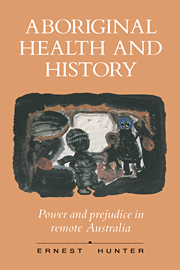1 - Caduceus and Clipboard
Published online by Cambridge University Press: 18 October 2009
Summary
SETTING AND SET
Beyond Australia's northern horizon, submerged by time and rising seas, is another coastline. Somewhere along that slowly shifting shore prehistoric wanderers welcomed the certainty of solid ground — the first footprints of Homo sapiens marked the sand and were washed away. Perhaps slow curious eyes followed them, or furtive, frightened, fluttering glimpses. The ancestors of the ancestors, markers of the land, had entered the rhythm of change, caught in the moods of this land, transformed by it across the centuries and transforming it. Those earliest landfalls, perhaps over 50 000 years ago, may have been off the Kimberley region of Western Australia. To reach the Sunda Shelf, even at the lowest level of the seas, would have required a sea-crossing of some 87 kilometres (Flood 1983). For the survivors of that journey into the unknown there was no return.
THE REGION
Age-scarred and rugged, with colours drained by a relentless sun, the weathered landscape of the Kimberley seems to declare its resistance to change. However, beneath lies a hidden story of geological change. The sandstones and shales of the plateaux testify to ancient forces, while the sediments beneath the sandy country of the west and east Kimberley tell of more recent transformations (Petheram & Kok 1986). The region is vast, even by Australian standards, and remote. It is over 2000 kilometres by road from Perth to Broome in the south-west Kimberley and another 1000 kilometres to Kununurra in the north-east, near the Northern Territory border.
- Type
- Chapter
- Information
- Aboriginal Health and HistoryPower and Prejudice in Remote Australia, pp. 1 - 23Publisher: Cambridge University PressPrint publication year: 1993



